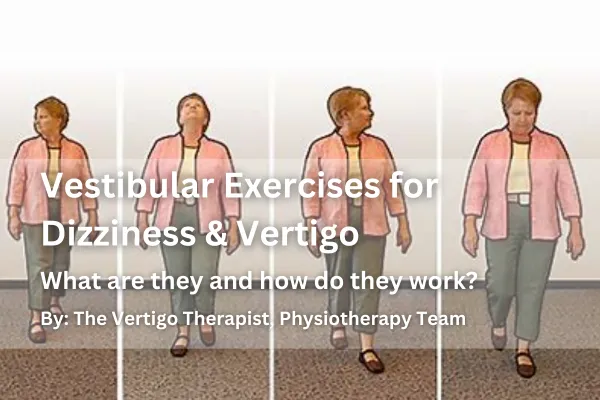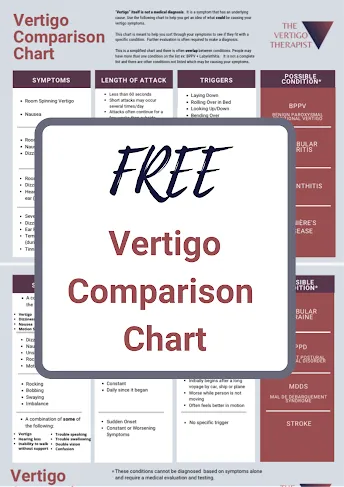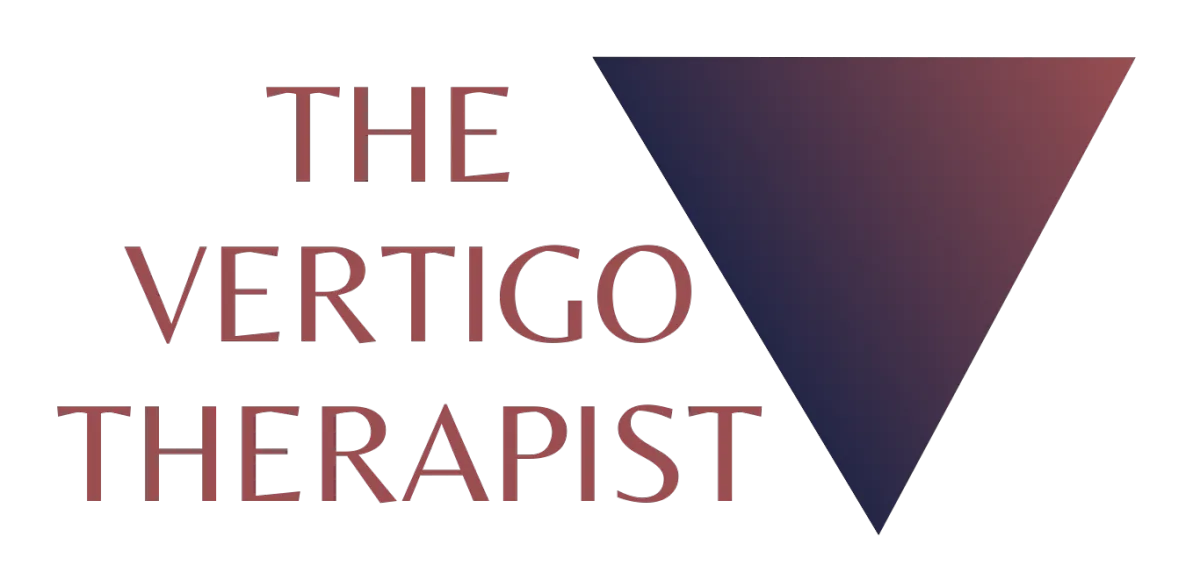Articles + Blog Posts
created by The Vertigo Therapist team.

Exercises for Vertigo and Dizziness
“Vestibular Rehabilitation [VR] is a specialized form of exercise therapy to alleviate the symptoms of vestibular disorders."
Exercises for Vertigo and Dizziness
What are they and how do they work?
What is Vestibular Rehabilitation (VR)?
VR is a specialized form of exercise-based therapy to alleviate the symptoms of vestibular disorders. It includes head, body and eye exercises to retrain the brain!
Goals of VR:
Reduce vertigo and dizziness
Reduce gaze instability (when your eyes and head movement are not working together)
Reduce imbalance and risk of falling
Address any secondary symptoms (e.g. off balance, headaches, neck pain) from the vestibular disorder
This is done by individualized exercises after a comprehensive vestibular assessment completed by a physiotherapist to identify the areas that are not functioning optimally.
There are 3 main methods of exercise:
1. Habituation
2. Gaze Stabilization
3. Balance Training
1. Habituation Exercises
These are used to treat dizziness caused by self motion or visual stimuli.
For who:
Clients’ who report dizziness when moving around, quick head movements, or position changes.
Clients who get dizzy in busy stimulating environment including shopping malls, grocery stores, watching movies or TV, and walking over patterned flooring or shiny floors.
What does it include:
Exercises that include gradual exposure to the provoking stimulus or movement.
Over time, the brain learns to adapt to the stimulus and then reduces the dizziness intensity!
Goal: to reduce dizziness with repeat exposure to movements or visual stimuli (e.g. grocery store) that provokes clients’ symptoms.

Habituation Exercise #1:
Eye Movement Exercises (aka eye stretches)
Moving your eyes in all directions and especially focusing on the movements that provoke symptoms. Starting the most aggravating movements very gradually is key to success.

Habituation Exercise #2:
Head Motion (neck range of motion)
Moving the head/neck in all directions, keeping within a comfortable range and gradually increasing exposure to the most aggravating directions.
image source: https://musculoskeletalkey.com/neck-assessment
2. Gaze Stabilization
For Who?
People who report difficulty seeing the world clearly because vision is jumpy when reading or trying to identify objects in the environment especially while moving!
What does it include:
Movement of the head in multiple directions while keeping your eyes focused on an object that is stationary or moving.
This should be done in several different ways to improve vestibular adaptation
Various speeds of motion of an image on the eye (retinal slip)
Different head movement frequencies
Different directions of head movement
Goal: to improve control of eye movements so vision is clear during head movements
Gaze Stabilization Exercise #1:

A/ Turning your head side to side at a specific speed while looking at a stationary object
B/ Turning your head and upper body side to side while focusing on your outstretched thumb.
image source: https://www.ncbi.nlm.nih.gov/pmc/articles/PMC3259492/pdf/jcn-7-184.pdf
Gaze Stabilization Exercise #2:

Smooth Pursuits - Tracking a moving object with your eyes, with or without head movement at the same time.
image source: https://ahc.aurorahealthcare.org/fywb/x20521.pdf

Gaze Stabilization Exercise #3:
Saccades - looking back and forth between objects with only eye movements, no head movement.
image source:https://ahc.aurorahealthcare.org/fywb/x20521.pdf
3. Balance Retraining Exercises
For who:
Clients’ who are having difficulty with feeling off balance or experiencing falls.
What does it include:
Specific exercises to challenge the balance system and treat the cause of the balance issue(s).
Moderately challenging balance activities
Can be static (standing still) or dynamic (with movement)
Goal: improve steadiness so activities of daily living for self care, work, and leisure can be performed safely and easily.

Balance Exercise #1:
Single Leg Balance
image source: https://ahc.aurorahealthcare.org/fywb/x20521.pdf

Balance Exercise #2:
Tandem Balance
image source:https://www.redboxfitness.com/proprioception/

Balance Exercise #3:
Tandem Walking (Sobriety Test!)
image source:https://morelifehealth.com/articles/best-balance-exercises-for-seniors
Summary
These are only a few of the many exercises that can help with vertigo and dizziness. Though it may be tempting, do not perform these exercises without first seeing a vestibular physiotherapist who will carefully select the right exercise, intensity, frequency and progression of the exercise. If the exercise is not right for you, it can significantly trigger and worsen symptoms. Find a local vestibular therapist who can help you pick out the best exercises to help you and your symptoms.
**Disclaimer: This blog post is intended for educational purposes ONLY. Information presented or discussed is not intended to assist in diagnosis or treatment of any medical condition(s). Information provided does NOT replace the advice of a knowledgeable health care provider. If you use any of the information for the purposes listed above, you do so at your own risk.

Vertigo is a symptom, NOT a diagnosis.
FREE VERTIGO COMPARISON CHART
Knowing the true cause of your vertigo is
the KEY to treating it properly.
Download the FREE Vertigo Symptom Comparison Chart
Online OR
1960 Appleby Ln. Suite 25
Burlington, Ontario L7L 0B7
Call 365-440-8614
Email: admin@thevertigotherapist.com

